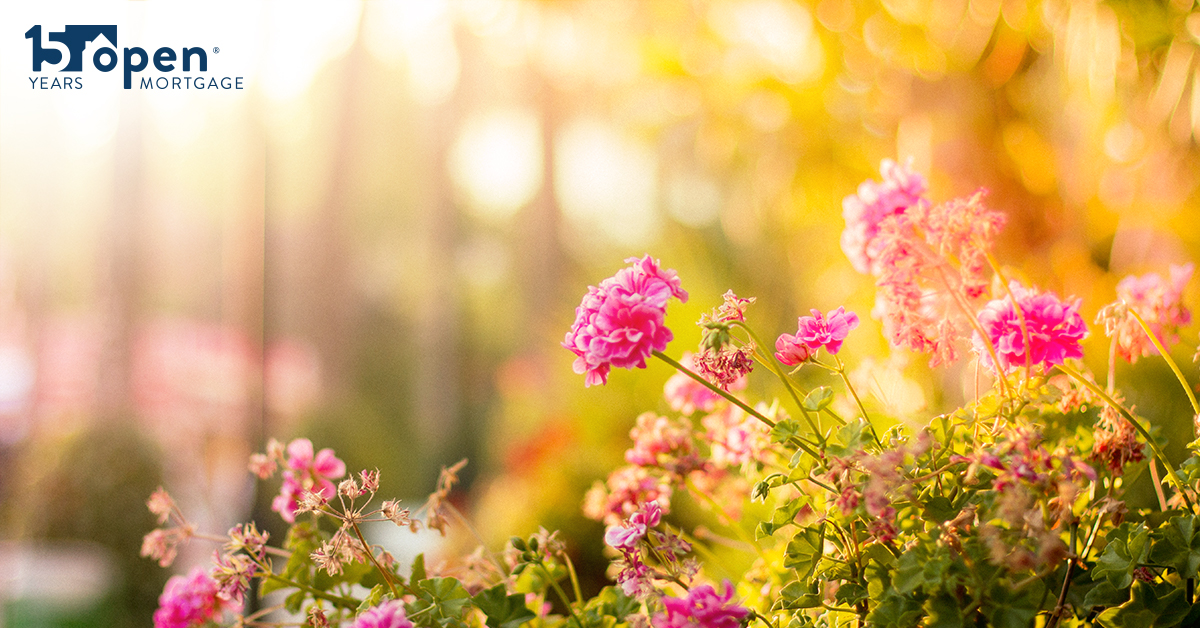
Planning a Spring Flower Garden? Here's What to Plant
Spring is here! Frogs are croaking, birds are singing and flowers are blooming. Whether you’re getting
ready to sell your home or just want to add some beauty as an investment in your home (and equity), this guide will help you get started.
Plant Hardiness Zones
Before you plant anything, it’s important to know what grows well in your area and when to start planting certain varieties. The USDA divides the US into 13 zones. Other organizations use seven to eight zones and are easier to understand. Zones are based on a ten degree difference in average yearly winter temperature and are basic guidelines for what to plant if you want plants to thrive in your area.
How to Plant for Maximum Beauty
Making a flower bed look professional is easy if you remember to add varying color, height and textures. For each zone below, we’ll give some examples of flowers to plant in the back, middle, front and a variety filler that meets these rules.
Zones 3 and 4
These zones represent the coldest zones in the US, and the shortest growing season, with annual minimum temperatures of -30ºF to -20ºF. Planting in this zone is between April and September.
Consider these flowers:
Back: Hollyhock – The attractive colors, ranging from red, orange, yellow, black, purple and pink—and the plant’s height make it a garden favorite. Some varieties reach five to six feet.
Middle: Monkshood—These popular and beautiful ornamental flowers bloom white or blue, but gardeners should take note: the flowers are poisonous if ingested.
Front: Hippeastrum—showstopping blooms in red, orange, pink, or white grow about one to two feet tall.
Filler option: Queen Anne’s Lace
Zone 5 and 6
These zones have a medium length growth season from March to November, with lowest temperatures averaging -15ºF to -5ºF.
Consider these flowers:
Back: Agastache—Red, pink, blue, purple, or yellow, these perennial plants with stiff, angular stems grow up to six feet tall.
Agave—this green succulent grows about three to eight feet.
Middle: Ornamental onion—purple or white blooms sprout from these alliums, which reach three feet or more in height.
Front: Floss flower—these blue/purple flowers grow from six inches to two feet.
Baneberry—when these plants flower, the stems turn red and pea-sized white berries develop. Because the berries are poisonous, homeowners with small children should take care with these plants that reach one to two feet.
Filler option: Japanese Anemone
Zone 7
In this zone, planting times range from February to November, with a medium length growing season. Minimum temperatures hit -5ºF.
Consider planting:
Back: Glossy abelia—white, pink or red/orange, these plants will reach three to six feet tall and wide. Agapanthus Lily of the Nile—These blue/purple flowers reach up to four feet in height.
Middle: Black Cohosh—black/white blooms hit between four to six feet.
Front: Golden Marguerite—yellow and white flowers grow from one to two feet. Snapdragons in a variety of colors, like red, orange, yellow, purple, pink, and white will reach one to two feet.
Filler option: Columbine
Zone 8 and 9
These zones offer the longest growing seasons, with planting dates of February to November for Zone 8, and the whole year for Zone 9. Lowest minimum temperatures are 15ºF to 25ºF with hot summers.
Consider planting:
Back: Aster flowers in purple, pink, blue, white. Some varieties grow up to eight feet.
Middle: Bugbane—white flowers that grow from two to four feet.
African Lily—blue, white blooms hit two to four feet.
Front: Chives or German Garlic: Green stems with white, purple, and pink blooms reach one to two feet. Sea thrift—the low-growing perennial offers lovely pink blooms that reach six inches up to one foot.
Filler option: Grassy-leaved Sweet Flag or Toothpick Weed





